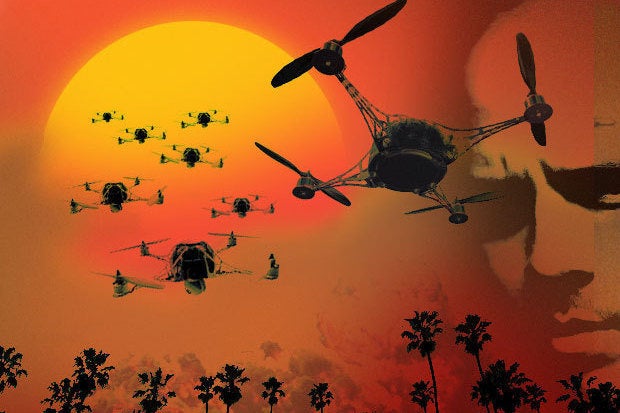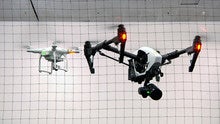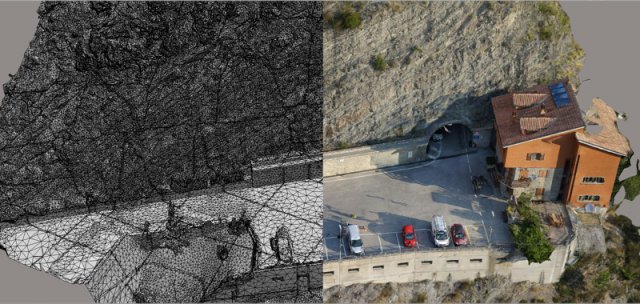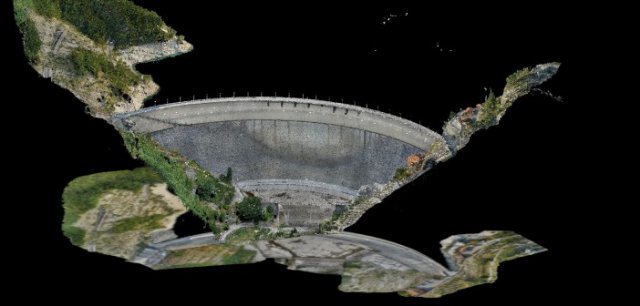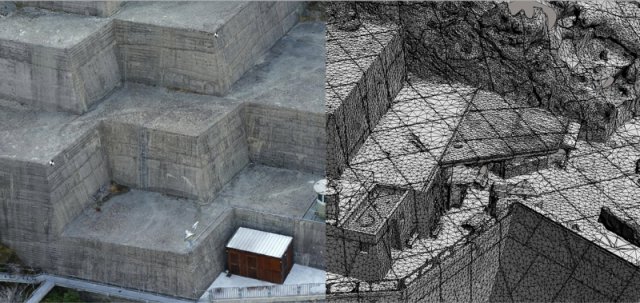How Drone Usage Will Revolutionize America's Infrastructure
 Monday, September 26, 2016 at 10:31AM
Monday, September 26, 2016 at 10:31AM IMAGE SOURCE: GETTY IMAGES.
It's a $45.2 billion opportunity.
While commercial drones have been flying since the early 1980s, their importance to commerce is just starting to take off. According to a recent report (link opens PDF) by business consultancy PricewaterhouseCoopers (PwC), the potential commercial applications for drones is astounding. It found that the global value of drone-powered solutions is $127.3 billion, with the best prospect for drone applications being the infrastructure sector, which PwC pegs at a $45.2 billion opportunity.
Drilling down into the infrastructure opportunity
The reason PwC sees a vast opportunity for drones in the infrastructure sector is that these companies not only perform hazardous work but operate complex assets distributed over large areas. It cites energy companies as one sector that should be one of the first big beneficiaries of drone technology solutions. That's because drones can increase safety and save money by performing three critical applications: investment monitoring, maintenance, and asset inventory. Several companies have already used drones for these applications, and given the initial results, drone usage is likely to continue to become an increasingly important tool for American infrastructure companies.
Drones in flight: Saving lives, time, and money
Drones have already taken flight in the oil and gas sector with ConocoPhillips (NYSE:COP)making history in 2013 after it was the first company approved by the U.S. for the commercial use of a drone. That initial flight took place in remote airspace over the Chukchi Sea in Alaska with a ScanEagle drone manufactured by a subsidiary of Boeing (NYSE:BA). ConocoPhillips used the drone for marine mammal and ice surveys offshore Alaska as it prepared to conduct exploratory drilling in the region. While the company never moved forward with this particular drilling project, drones are becoming an increasingly important tool for oil and gas companies.
Not only are oil companies using drones to gather data for exploration, but they are using them for inspection operations to determine which drilling rigs need maintenance. For example, producers BP (NYSE:BP), Shell (NYSE: RDS-A) (NYSE: RDS-B), and Apache(NYSE: APA) are using drones to inspect offshore oil rigs in the North Sea for damage. In this case, drones equipped with high-definition and thermal cameras are replacing workers that needed to hang from a wire to inspect rigs. This replacement not only improves safety but it can save time and money, which is critical given where oil prices are these days.
The oil industry is not the only one employing drones for safety reasons. Telecom giant AT&T(NYSE:T) recently completed a trial using drones to inspect its cell towers. It did so because "every time we use a drone it's just one less tower climb. Every tower climb that we can save provides a safer situation, or less opportunity for potential injury." AT&T hailed the trial as a success and going forward it plans to use drones in its tower operations to inspect them for trouble spots. While the drones will not replace tower climbers, it will enable the company to use them more efficiently because they will not have to climb every tower, and when they do, they will know what to expect and will have the proper equipment with them.

IMAGE SOURCE: AEROVIRONMENT.
Cashing in on the drone revolution
Most of the companies that operate drones serving the infrastructure sector are privately held, which limits investment options. Furthermore, several drone makers are embedded in larger companies like Boeing and are therefore a small piece of their global business, which limits investors' direct upside. That said, investors do have at one compelling option to consider.
AeroVironment (NASDAQ:AVAV) is an early leader in the unmanned aircraft space after spending decades developing solutions for the military. It is initially branching into commercial applications to change the way farmers and energy providers monitor and manage their assets. AeroVironment has developed a turnkey information solution, with its Puma AE its first commercial drone approved by the Federal Aviation Administration. That drone is already in the field with British oil giant BP, which currently uses it to monitor operations at its Prudhoe Bay oil field in Alaska. That said, commercial drone applications are a small part of AeroVironment's current sales, though it represents a massive opportunity for the company over the long term.
Investor takeaway
Drones are just starting to take flight to provide time- and money-saving solutions to infrastructure companies. While that is good news for investors in companies that own large infrastructure portfolios like BP or AT&T, there aren't many worthwhile direct drone investment options out there right now other than AeroVironment. That said, new investment opportunities should arise down the road as more infrastructure operators start employing drones.
BY Matthew DiLallo (TMFmd19)


